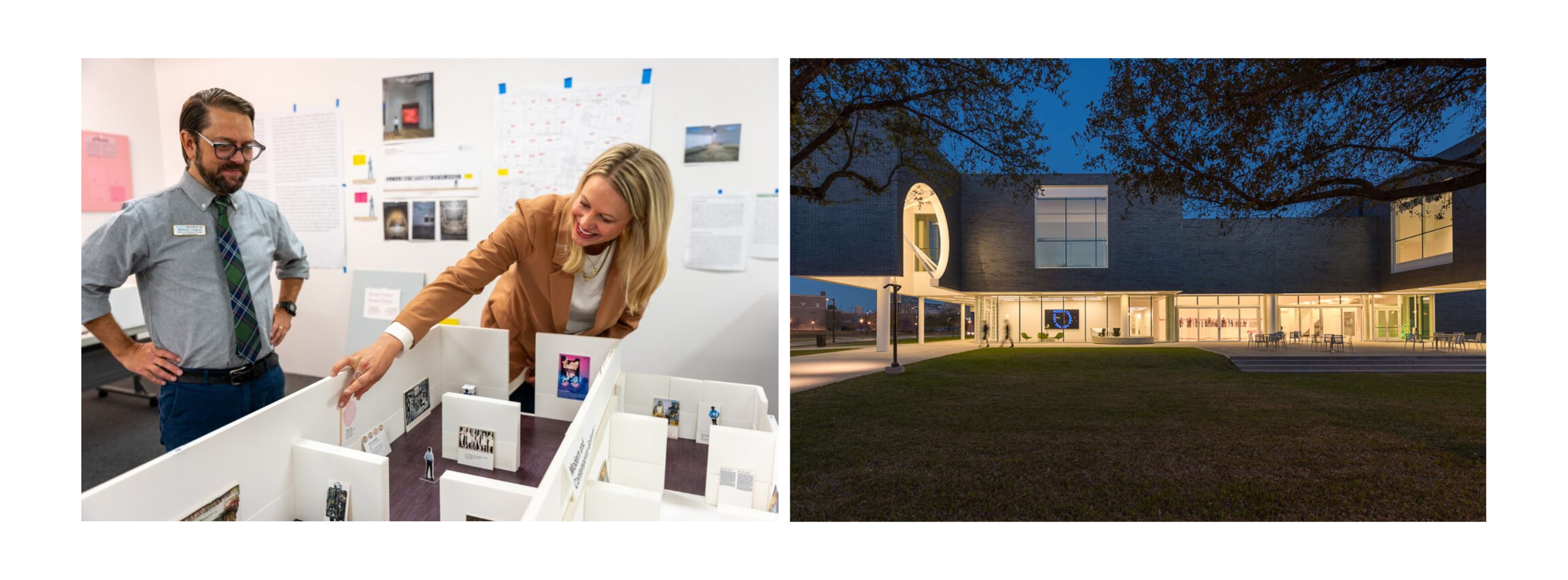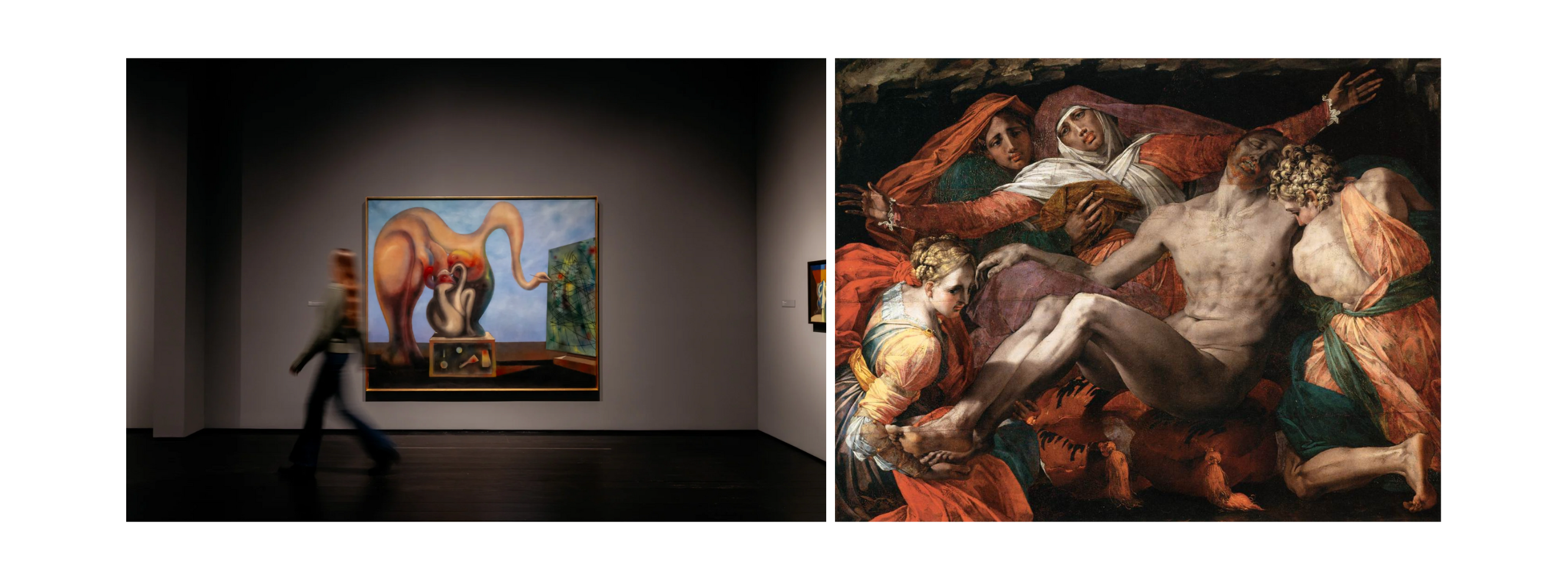
Back in 2012, Suzanne Deal Booth made a quiet but seismic gesture: she brought James Turrell’s Twilight Epiphany Skyspace to Rice University—a luminous, meditative vessel plunked down in the middle of Houston, just as the city’s cultural ecosystem was starting to accelerate. At the time, Elle Moody was still an undergrad at Rice, walking the same campus paths, unaware that just a few years later she’d return—not as a student, but as a mover in her own right, helping open the Moody Center for the Arts just a stone’s throw from Turrell’s celestial chamber.
Fast forward a decade and both women—Rice alums, yes, but more importantly, these two cultural architects—have emerged as defining figures in the Texas arts landscape. Deal Booth has long been one of the state’s most influential patrons: a restorer, a collector, and a quiet but decisive force behind countless artist-driven projects. Moody, meanwhile, has been steering her family foundation toward the future, injecting it with fresh vision: access, equity, and real support for the next wave of creatives.
But this isn’t just a story about geography or institutions. What binds them is something deeper: a shared belief in the power of art to reframe conversations, bridge divides, and spark change. They're friends, yes. Admirers of each other’s work, absolutely. But they’re also standard-bearers for a different kind of Texan patronage—one that’s as generous as it is rigorous, as rooted in community as it is in aesthetics.
This summer, we brought the two Austin-based philanthropists together for a conversation that spanned the personal and the political—early encounters with art that reshaped their sense of the world, the ongoing work of rewriting a Texas cultural narrative, and the legacy they hope to leave behind. If one thread runs through it all, it’s this: curiosity as a compass, and access as a mission. What emerged wasn’t just a dialogue between two arts patrons—it was a blueprint for how women are reshaping the cultural infrastructure of the American South, one institution, one artist, one act of vision at a time.
Suzanne Deal Booth: I was thinking about talking to you, and about Texas and the arts, and what struck me most was how strong a role women have always played around here. From the 19th century on, women in Texas have been leaders in philanthropy, museums, culture, and education. Ann Richards, Barbara Jordan, Ma Ferguson, Lady Bird Johnson, Molly Ivins, Linda Pace, Dominique de Menil—they’ve all shaped this state.
Elle Moody: I couldn’t agree more. Women have been at the center of building our cultural identity. And here we are, two women deeply invested in the arts in Texas!

Suzanne Deal Booth: Exactly. If my collection had a voice and it spoke for Texas, it would say: rah, women.
Elle Moody: For me, Texas is also a melting pot. People outside the state don’t always see that. They think “cowboys, oil, politics.” When I lived in New York, people asked if I had a horse. [laughter] But Houston, for example, is one of the most diverse cities in America. That diversity, combined with Texans’ generosity, makes the arts ecosystem here incredibly supportive.
Deal Booth: Yes—there’s a “can-do” spirit in Texas. Historically, women with resources put their energy into making communities stronger, into building schools and cultural institutions. That philanthropy made things possible that didn’t necessarily come from government support.
Moody: Exactly. In New York or in Europe, the state often funds the arts. But here in Texas, it’s private patrons who created the Museum of Fine Arts, Houston, the Menil, the Dallas and Fort Worth institutions.
Deal Booth: I’m glad you mentioned Dallas. There are some great institutions in Dallas. That’s where I was born.
Moody: There’s a pride in saying, “If New York can have it, we can too.”
Deal Booth: And Texans integrate art into every corner of life—the airports, stadiums, parades. It’s part of daily experience. Texans have a fierce independence, a kind of authenticity, and determination. If someone in Texas wants something to happen, it usually will.
Moody: I’d add that Texans are profoundly generous—not just financially, but with spirit, time, and care. We’re a generous bunch! There’s a sense of responsibility to make the state better. If Texans see a problem, they pull together to fix it.
Deal Booth: That might tie back to the education here. Texas history is taught twice, in elementary and again in high school. They don't do that anywhere else in the country! So people grow up with a strong sense of identity, of belonging, of knowing their history. You know it because you’ve been tested on it in school! But it empowers people.
Moody: There’s more to it than The Alamo.
Deal Booth: The stereotypes can be funny. I just watched The Hunting Wives. I mean -- come on!
Moody: Everyone is watching that. I need to watch it.
Deal Booth: Texas actually celebrates novelty and creativity. Think of the musicians, filmmakers, visual artists who’ve come from here—Beyoncé, Janis Joplin, Selena. Texans put their own spin on culture with wit and power. That’s the narrative I’d want to amplify: clever, engaging, positive.
Moody: Absolutely. We have to make sure as many people as possible have access to this wit and power. We have to make sure kids and families across the state, even in rural places, experience the arts. At the Moody Foundation, we’ve been passionate about supporting groups all over the state like Creative Action, Chinati and Ballroom Marfa, that bring art into schools and communities.
Deal Booth: Exposure matters. You never know when a work of art will transform someone. For me, one of those moments was in Italy, seeing a Mannerist painting by Rosso Fiorentino. I couldn’t believe it was from the 16th century—it felt so modern, almost hallucinatory. That changed my life.
Moody: Do you ever go back to that painting?
Deal Booth: I still have the same reaction to it! Mannerism, at that time in Italy, was forbidden by the church because it was so wild and crazy.
Moody: The best kind of artwork!
Deal Booth: That’s kind of how I feel contemporary art has been. It's not just there to be pretty. It's there to challenge you and to help you think about other things, if you're open to it, if you can see it.

Moody: I had a moment like that too—seeing a Max Ernst show in Vienna when I was young. It just reminded me of the dreams that I had and, to think that an artist that was no longer living, that lived in Germany, you know, had dreams similar to the types that I did. That our lived experiences could be so similar, decades apart. That really shook me to my core.
Deal Booth: There are some great Marx Ernst paintings at The Menil.
Moody: I love that room. And just walking distance from it, you have the Rothko Chapel. You know -- I went to Rice. Rice was hard. College is a challenging age for anybody, but that's where I would go when I needed a moment of quiet, a moment of transcendence, a moment of getting out of myself and my body. Entering through those doors, you're exiting the bright Texas sun and going into this dark, beautiful, quiet space that is very spiritual. You're not on your phone. You're looking at these dark-hued paintings that look one way when you sit down and another way when you leave.
Deal Booth: The Rothko Chapel really showed us that the James Turrell Skyspace could be possible at Rice. I loved bringing that work to life. I worried at first whether it would work. It was a huge project in the middle of campus. They had not had anything like that before.
Moody: What a success.
Deal Booth: One of the best parts over the years is how many people have written to me about falling in love in the Turrell Skyspace or being proposed to there. It’s also very close to the medical center; people who are suffering go there for a moment of solace.

Moody: I’ve been so impressed by Rice and how much the arts programs have grown there.
Deal Booth: The Moody Center for the Arts has a lot to do with this. It transformed campus life with its free, cutting-edge exhibitions.
Moody: Rice to many is known as a STEM school. As a current board member, I am there often, and I love seeing engineers and scientists walk into the galleries and discover connections between disciplines. That kind of openness is powerful.
Deal Booth: I’ve been thinking a lot about universities recently. Can universities still be the centers of creative thought and innovation? They’re being clamped down in so many ways right now. But Rice has shown how innovation and art can bloom on a campus.
Moody: Right, what will future generations take away from all of this? If I could tuck advice into a time capsule, it would be: support artists because their voices matter, especially now. And collect with joy. Don’t buy art as an investment—buy what moves you.
Deal Booth: I’d add: be curious. Stay open. Art teaches us about other cultures, histories, and ways of seeing. I’m going to El Paso soon; it’s not a city that I know well, but I’m curious. Curiosity keeps us alive.
Moody: And ultimately, I’d add there is an important legacy piece regarding these built spaces and experiences and access to the arts—ensuring that every child, family, and community in Texas has the chance to experience the power of art for generations to come, is crucial.
Deal Booth: Exactly. You never know who will be transformed by art, but you have to make sure that chance exists.